HEALTH
PRF Under Eyes: A Natural Approach to Rejuvenation
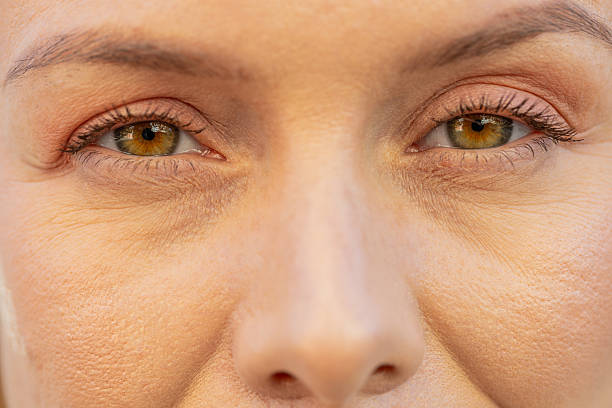
In today’s rapidly advancing world of aesthetics, beauty is no longer defined solely by temporary fixes or invasive procedures. The most effective treatments are those that blend science, safety, and natural results. One such rising innovation is PRF under eyes, a regenerative therapy that restores youthful vibrance while supporting the body’s natural healing process.
This article explores what PRF under eyes is, how it works, its benefits, and why it represents a new generation of cosmetic solutions redefining beauty and wellness.
What Is PRF Under Eyes?
PRF, short for Platelet-Rich Fibrin, is an advanced treatment derived from a patient’s own blood. Unlike synthetic fillers, PRF uses natural growth factors and healing proteins to stimulate collagen production and tissue regeneration.
When applied under the eyes, PRF addresses common concerns such as:
-
Dark circles
-
Hollow under-eye areas (tear troughs)
-
Fine lines and early wrinkles
-
Tired, aged appearance
What sets PRF apart is its holistic approach: instead of masking symptoms, it rejuvenates skin from within.
Why Choose PRF Instead of Fillers?
Traditional dermal fillers have long been used for under-eye rejuvenation. While effective, they can sometimes lead to puffiness, irregularities, or a “filled” look.
PRF under eyes offers a natural alternative with several advantages:
-
No synthetic material: Treatment comes directly from the patient’s own blood.
-
Gradual results: Improvements develop over weeks as collagen rebuilds.
-
Longer-lasting effects: Results often outlast traditional fillers.
-
Safety profile: Reduced risk of allergic reactions or complications.
Patients increasingly seek PRF because it aligns with a growing preference for natural, regenerative beauty solutions.
How Does PRF Work Under the Eyes?
The process of PRF under eyes is both scientific and patient-friendly:
-
Blood draw: A small amount of the patient’s blood is collected.
-
Centrifugation: The blood is spun to isolate the platelet-rich fibrin layer.
-
Injection: The PRF is carefully injected into the under-eye region.
-
Regeneration: Over time, growth factors stimulate new collagen and improved tissue quality.
Unlike PRP (Platelet-Rich Plasma), PRF contains more healing components and works more effectively for delicate areas like the eyes.
Benefits of PRF Under Eyes
The popularity of PRF under eyes continues to grow because it delivers both aesthetic and wellness-related benefits:
-
Improved skin texture: Smoother, firmer skin under the eyes.
-
Reduced dark circles: Enhanced blood flow and tissue repair brighten the area.
-
Natural volume restoration: Collagen rebuilds lost structure without overfilling.
-
Youthful appearance: Results look subtle and authentic.
-
Healing support: PRF also improves skin health, not just appearance.
This makes PRF not only a cosmetic treatment but also a regenerative therapy.
The Role of PRF in Modern Aesthetics
In today’s beauty industry, patients demand more than surface-level results. They want treatments that respect the body’s natural biology. PRF reflects this shift, as it integrates science with self-healing.
Clinics offering PRF under eyes emphasize:
-
Sustainability in beauty: Using natural resources from the patient’s own body.
-
Customization: Each treatment adapts to individual skin concerns.
-
Longevity: PRF enhances long-term skin quality, not just temporary appearance.
This approach positions PRF as part of a broader movement toward regenerative aesthetics.
Challenges and Considerations
Like any treatment, PRF under eyes comes with considerations:
-
Multiple sessions may be needed for optimal results.
-
Gradual improvements mean patience is required compared to instant fillers.
-
Mild swelling or bruising may occur temporarily after injections.
However, these challenges are outweighed by the opportunities PRF presents—natural results, improved safety, and long-term rejuvenation.
Who Is a Good Candidate?
PRF under eyes is ideal for individuals who:
-
Struggle with dark circles or hollow tear troughs.
-
Prefer natural, non-synthetic treatments.
-
Want subtle, gradual improvements instead of dramatic changes.
-
Value treatments that improve overall skin health.
It may not be suitable for those with certain blood conditions, so a consultation with a qualified provider is essential.
Looking Ahead
As aesthetic medicine continues to evolve, PRF under eyes is emerging as a gold standard for under-eye rejuvenation. It represents a shift away from temporary fixes toward regenerative treatments that work in harmony with the body.
In the future, PRF may expand even further—combined with stem cell therapies, microneedling, or advanced skincare regimens—to maximize results. This innovation signals a new era where beauty, health, and science intersect seamlessly.
Conclusion
The journey to under-eye rejuvenation no longer relies solely on fillers or invasive surgery. With PRF under eyes, patients now have access to a treatment that restores youthfulness naturally, safely, and effectively.
By stimulating collagen, improving circulation, and healing skin from within, PRF offers more than aesthetic improvement—it provides a path to lasting confidence and well-being.
In a world where consumers increasingly demand authenticity, safety, and natural beauty, PRF under eyes stands as a leading solution.
HEALTH
Southall Health and Safety: Building a Safer, Healthier Community
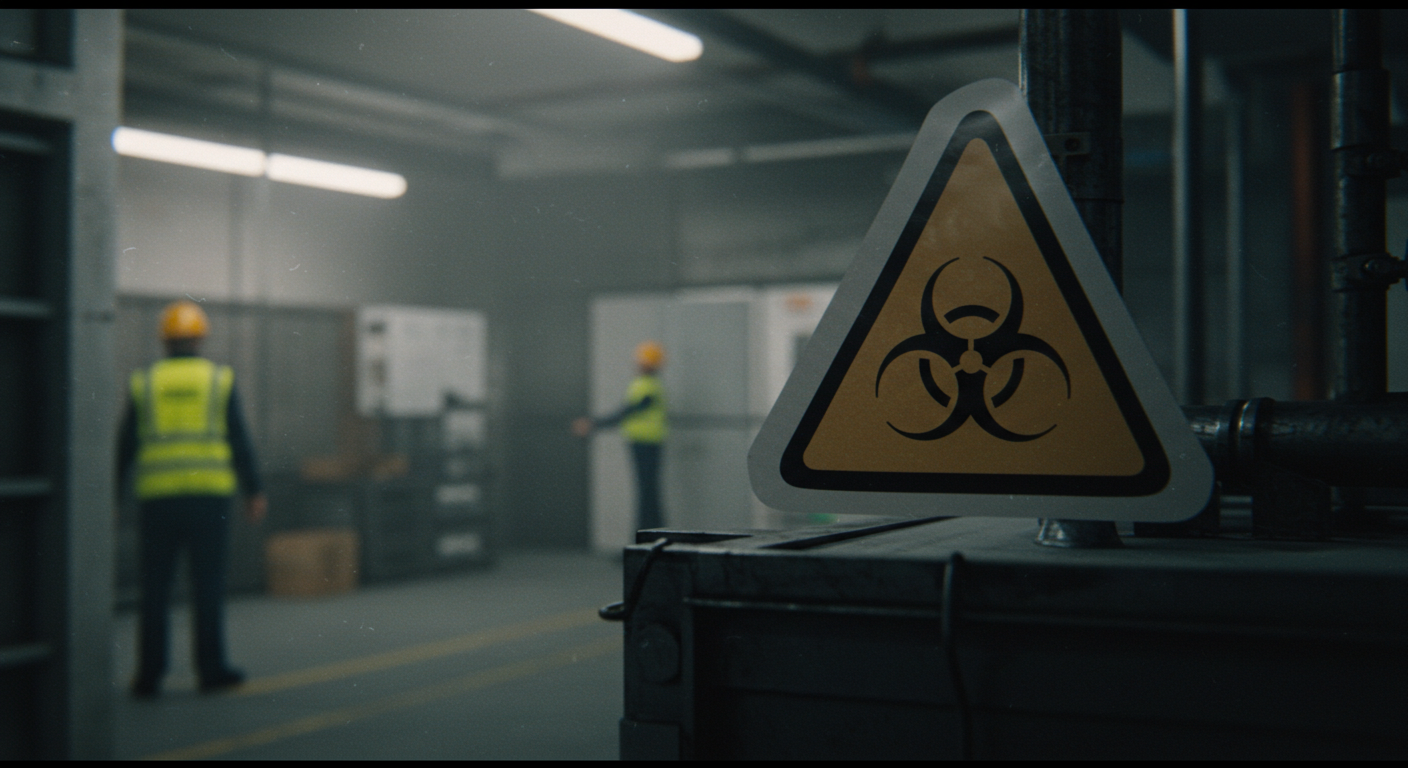
Southall, a vibrant district in West London, is known for its rich cultural diversity, bustling marketplaces, and strong community ties. But like any urban area, ensuring the well-being of residents, employees, and visitors requires a serious commitment to health and safety. The concept of Southall Health and Safety encompasses everything from workplace hazard prevention to community health initiatives, public safety campaigns, and environmental protection.
This article explores the importance of health and safety in Southall, the key areas of focus, regulations that apply, community initiatives, and how businesses and individuals can work together to create a safer environment for all.
Understanding Health and Safety in a Local Context
When people hear “health and safety,” they often think of workplace laws or protective gear. While these are vital components, health and safety in Southall also extend into public health measures, housing standards, fire prevention, food hygiene, environmental management, and accident reduction.
Key sectors where health and safety matter in Southall include:
-
Workplaces and Industrial Areas – From retail shops along South Road to warehouses in nearby business parks, ensuring staff and visitors are protected from hazards is essential.
-
Public Spaces – Parks, markets, and community centres must remain safe for all users, including children and the elderly.
-
Housing – With a mix of private rentals and social housing, maintaining building safety, hygiene, and fire precautions is critical.
-
Transport and Roads – Managing pedestrian safety, reducing traffic accidents, and improving air quality are ongoing concerns.
The Legal Framework for Health and Safety in Southall
Southall is governed by UK health and safety laws, primarily under the Health and Safety at Work etc. Act 1974. This legislation places duties on employers, employees, and landlords to ensure safe conditions. Supporting regulations include:
-
Management of Health and Safety at Work Regulations – requiring risk assessments and preventative measures.
-
Control of Substances Hazardous to Health (COSHH) – for workplaces handling chemicals or hazardous materials.
-
Food Safety and Hygiene Regulations – critical for Southall’s many restaurants, cafes, and food stalls.
-
Fire Safety Order 2005 – covering building fire precautions, escape routes, and emergency planning.
The local council, often working with the Health and Safety Executive (HSE), conducts inspections and enforces these rules. Businesses that fail to comply can face warnings, fines, or closure.
Workplace Health and Safety in Southall
Southall’s economy is powered by small businesses, retail shops, restaurants, and light industrial units. Employers are responsible for:
-
Risk Assessments – Identifying hazards like slippery floors, heavy lifting tasks, or exposure to heat in kitchens.
-
Staff Training – Teaching safe work practices, proper use of equipment, and emergency procedures.
-
Protective Equipment – Providing gloves, masks, or high-visibility clothing where necessary.
-
Incident Reporting – Recording accidents and taking corrective action to prevent recurrence.
Well-managed health and safety not only prevents accidents but also boosts morale, reduces sick leave, and enhances business reputation.
Public Health and Community Safety
Southall’s health and safety responsibilities extend beyond workplaces. Public health issues include:
-
Cleanliness and Waste Management – Proper disposal of litter and food waste to prevent pests.
-
Air Quality – Reducing vehicle emissions, particularly around busy streets like The Broadway.
-
Noise Control – Managing sound levels from construction, nightlife, and traffic.
-
Community Health Campaigns – Encouraging vaccination, healthy eating, and mental well-being.
Local authorities and community groups often collaborate on awareness campaigns, health fairs, and fitness programs to keep the population informed and engaged.
Fire Safety in Homes and Businesses
Given Southall’s mix of older buildings, densely packed housing, and busy commercial areas, fire safety is a top priority. Essential measures include:
-
Smoke Alarms – Installed and tested regularly in all properties.
-
Fire Exits – Clearly marked and free from obstruction.
-
Electrical Safety Checks – Preventing fires caused by faulty wiring or overloaded sockets.
-
Staff Drills – Regular evacuation training for employees in public buildings.
The London Fire Brigade works with the community to provide free fire safety visits, especially for vulnerable residents.
Food Hygiene and Restaurant Safety
Southall is famous for its South Asian cuisine, drawing visitors from across London. Maintaining food safety is essential to protect customers and uphold the area’s culinary reputation. This includes:
-
Proper Storage – Keeping food at safe temperatures.
-
Cross-Contamination Prevention – Separating raw and cooked foods.
-
Staff Hygiene – Handwashing, clean uniforms, and health checks.
-
Regular Inspections – Council health officers rate premises under the Food Hygiene Rating Scheme.
Good hygiene is not just about avoiding penalties—it’s about customer trust and public health.
Housing Safety Standards
In a district with a high number of rental properties, housing health and safety cannot be overlooked. Landlords are legally obliged to:
-
Keep properties free from damp and mould.
-
Ensure gas and electrical systems are safe and regularly serviced.
-
Provide adequate ventilation and heating.
-
Maintain structural safety, including staircases and balconies.
Tenants also play a role by reporting issues promptly and using appliances safely.
Road and Transport Safety
With heavy traffic, busy pedestrian crossings, and a high volume of cyclists, Southall faces ongoing road safety challenges. Key measures include:
-
Traffic Calming – Speed bumps, signage, and road narrowing in residential areas.
-
Pedestrian Crossings – Well-marked zebra crossings and traffic lights near schools and shops.
-
Cycle Safety – Encouraging helmet use and bike lights.
-
Public Transport Safety – Ensuring buses, trains, and stations meet safety standards.
Reducing road accidents requires cooperation between the council, transport providers, and the public.
Environmental Health in Southall
Environmental health is closely linked to safety and quality of life. In Southall, priorities include:
-
Pollution Reduction – Tackling industrial emissions and traffic fumes.
-
Waste Recycling – Expanding recycling facilities and awareness.
-
Pest Control – Preventing infestations in both residential and commercial properties.
-
Green Spaces – Maintaining parks for safe recreation and mental well-being.
Healthy surroundings contribute directly to a safer, more enjoyable community.
Community Involvement in Health and Safety
One of Southall’s greatest strengths is its active community spirit. Many health and safety improvements come from grassroots initiatives:
-
Neighbourhood Watch Schemes – Reducing crime and anti-social behaviour.
-
Volunteer Clean-Up Days – Keeping public areas litter-free.
-
Cultural Events with Safety Planning – Ensuring festivals and parades have proper crowd control and medical support.
-
Local Health Forums – Providing a voice for residents in shaping safety policies.
Community engagement ensures that policies address real-world needs and that residents take ownership of their shared environment.
Challenges and Future Priorities
Southall’s health and safety efforts face several challenges:
-
Population Growth – Increasing demand for housing, infrastructure, and public services.
-
Aging Infrastructure – Older buildings may need costly safety upgrades.
-
Economic Pressures – Businesses may cut corners if under financial strain.
-
Cultural Diversity – Safety messages must be communicated in multiple languages to be effective.
Looking ahead, priorities should include improving air quality, enhancing fire safety in older housing, and promoting road safety education for both drivers and pedestrians.
Practical Tips for Businesses and Residents
For Businesses:
-
Conduct annual risk assessments.
-
Train all staff in first aid and fire safety.
-
Keep clear records of safety checks.
For Residents:
-
Test smoke alarms monthly.
-
Report safety hazards to landlords or the council.
-
Use pedestrian crossings and teach children road safety.
Small, consistent actions by individuals and organisations can add up to significant improvements in community safety.
Conclusion
Southall Health and Safety is more than a legal requirement—it’s a shared responsibility. From busy shops and restaurants to family homes and public spaces, a culture of safety benefits everyone. By understanding the risks, following regulations, and working together, Southall can continue to thrive as a safe, welcoming, and healthy place for its diverse community.
In the years ahead, sustained commitment from local authorities, businesses, and residents will be key to making Southall not only vibrant and culturally rich, but also a model of community health and safety.
HEALTH
Wellness Technology by Pulsetto Health: Revolutionizing Mental and Physical Well-being
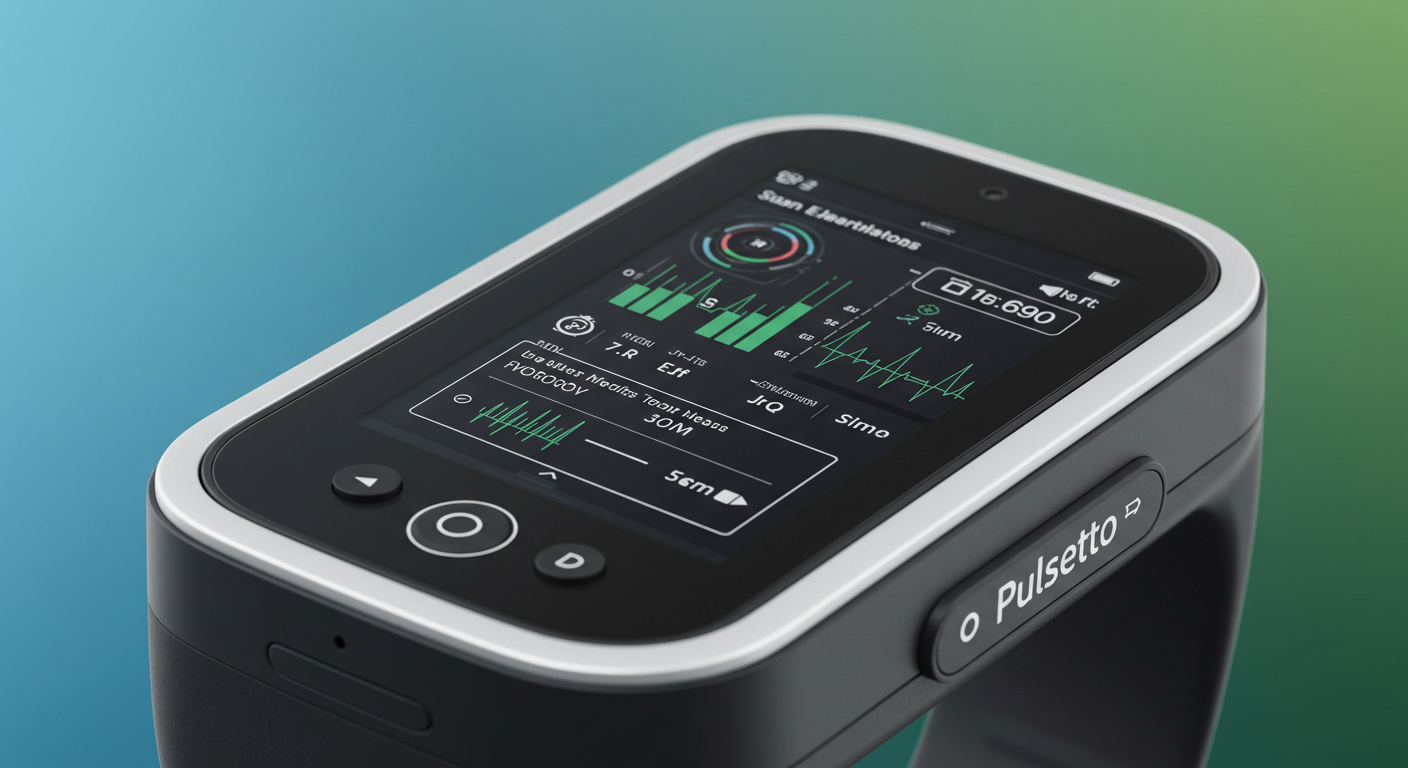
In today’s fast-paced world, stress and lifestyle-related health concerns are increasingly prevalent; consequently, innovative wellness solutions have become essential. Among these advancements, wellness technology bypulsetto health stands out as a pioneer in biohacking technology. Specifically, their Vagus Nerve Stimulator represents a breakthrough in non-invasive wellness care. Originally developed for stress management, the device has since expanded to address multiple health aspects.
While traditional approaches often rely on medication, wellness technology bypulsetto health instead uses scientifically validated neuromodulation. Furthermore, it offers three key benefits: first, it helps reduce stress; second, it improves sleep quality; and third, it enhances overall wellbeing. Although the concept may seem futuristic, research consistently supports its effectiveness.
Initially, such devices were limited to clinical settings, but now they’re available for home use. Similarly, while early versions were bulky, current models are wearable and discreet. As a result, users can conveniently incorporate them into daily routines.
Ultimately, Pulsetto’s innovation demonstrates how technology can transform preventive healthcare. Indeed, as more people seek holistic solutions, such devices will likely become mainstream. Therefore, they represent not just a temporary trend, but rather the future of wellness technology.
The Rise of Wellness Technology
Wellness technology has evolved from basic fitness trackers to advanced biofeedback devices that actively influence the body’s physiological responses. Companies like Pulsetto Health are at the forefront of this movement, integrating neuroscience, wearable tech, and AI to optimize human performance and mental health.
Why Vagus Nerve Stimulation (VNS)?
The vagus nerve is a critical component of the parasympathetic nervous system, responsible for regulating stress responses, digestion, heart rate, and inflammation. Research shows that stimulating this nerve can:
- Reduce anxiety and depression
- Improve sleep quality
- Enhance digestion and gut health
- Lower inflammation and support immune function
Pulsetto’s technology harnesses these benefits through non-invasive electrical stimulation, making it accessible for everyday use.
Pulsetto Health: Company Overview
Mission and Vision
Pulsetto Health was founded with the mission of democratizing advanced wellness technology—making clinical-grade therapies available outside medical facilities. Their vision is to empower individuals to take control of their mental and physical health through affordable, portable, and effective biohacking tools.
Founding Principles
- Science-Based Solutions – All products are backed by clinical research in neuromodulation.
- User-Friendly Design – Devices are wearable, wireless, and easy to integrate into daily life.
- Holistic Wellness Approach – Targets multiple aspects of health, from stress relief to cognitive performance.
How the Pulsetto Device Works
The Pulsetto Vagus Nerve Stimulator is a wearable device that delivers transcutaneous auricular vagus nerve stimulation (taVNS)—a method that activates the vagus nerve through gentle electrical pulses applied to the ear.
Key Features
✔ Non-Invasive & Painless – No surgery or needles required.
✔ Portable & Wireless – Can be used at home, work, or while traveling.
✔ Customizable Programs – Adjustable intensity and session duration.
✔ Smartphone Integration – Connects to an app for tracking progress and optimizing therapy.
The Science Behind It
- Stimulates the Parasympathetic Nervous System – Promotes relaxation and counters stress.
- Boosts GABA & Serotonin – Neurotransmitters linked to calmness and mood regulation.
- Reduces Cortisol Levels – The primary stress hormone.
- Enhances HRV (Heart Rate Variability) – A key marker of resilience and recovery.
Benefits of Using Pulsetto’s Wellness Technology
1. Stress & Anxiety Relief
Chronic stress is linked to numerous health issues, including heart disease, insomnia, and weakened immunity. Pulsetto’s VNS technology helps activate the body’s relaxation response, reducing anxiety naturally without medication.
2. Improved Sleep Quality
By regulating the nervous system, the device helps users fall asleep faster and experience deeper, more restorative sleep—ideal for those with insomnia or irregular sleep patterns.
3. Enhanced Mental Clarity & Focus
Vagus nerve stimulation has been shown to improve cognitive function, memory, and concentration, making it beneficial for professionals, students, and athletes.
4. Pain Management & Inflammation Reduction
Studies suggest that VNS can help alleviate chronic pain conditions like migraines, fibromyalgia, and arthritis by modulating pain signals and reducing systemic inflammation.
5. Digestive Health Support
Since the vagus nerve plays a crucial role in gut-brain communication, stimulating it can improve digestion, reduce bloating, and support a healthy microbiome.
Who Can Benefit from wellness technology bypulsetto health?
wellness technology bypulsetto health is designed for a wide range of users, including:
- Professionals dealing with work-related stress and burnout.
- Students facing exam anxiety and concentration challenges.
- Athletes looking for better recovery and performance.
- Chronic Illness Patients managing pain, inflammation, or autoimmune conditions.
- Meditation & Biohacking Enthusiasts seeking to optimize mental and physical health.
Clinical Evidence & Research
Pulsetto’s technology is supported by peer-reviewed studies on vagus nerve stimulation, including:
- A 2021 study in Frontiers in Neuroscience found that taVNS significantly reduced stress markers in participants.
- Research in Nature Communications (2022) demonstrated improved mood and cognitive function with regular VNS use.
- A meta-analysis in Neuromodulation (2023) confirmed its efficacy in treating anxiety and depression.
Pulsetto collaborates with neuroscientists and medical professionals to ensure its devices meet safety and efficacy standards.
Comparing Pulsetto to Other Wellness Technologies
| Feature | Pulsetto VNS | Traditional Meditation | Pharmaceuticals | Fitness Trackers |
|---|---|---|---|---|
| Non-Invasive | ✅ Yes | ✅ Yes | ❌ No (side effects) | ✅ Yes |
| Immediate Effects | ✅ Yes | ❌ Requires practice | ✅ Yes (but risks) | ❌ Limited feedback |
| Long-Term Benefits | ✅ Yes | ✅ Yes | ❌ Dependency risks | ❌ Passive tracking |
| Portability | ✅ Yes | ✅ Yes | ✅ Yes | ✅ Yes |
Pulsetto stands out by actively influencing the nervous system, whereas most wellness devices (like fitness bands) only track metrics.
Future Developments in Wellness Tech by Pulsetto
wellness technology bypulsetto health is continuously innovating, with upcoming advancements such as:
- AI-Personalized Stimulation – Adaptive programs based on real-time biometrics.
- Expanded Wearable Integration – Syncing with smartwatches and health apps.
- Corporate Wellness Programs – Partnering with employers to reduce workplace stress.
Conclusion
Pulsetto Health is pioneering the future of wellness technology bypulsetto health by combining neuroscience with innovative wearable design. While traditional approaches often rely on medication, this groundbreaking company instead offers clinically proven, drug-free solutions for modern health challenges. Initially focusing on stress and sleep improvement, their flagship Vagus Nerve Stimulator has since expanded to enhance cognitive performance as well.
As more individuals seek holistic alternatives to pharmaceuticals, Pulsetto’s technology provides a scientifically validated option. Furthermore, their approach represents a significant shift in preventive healthcare, merging ancient knowledge of nerve stimulation with cutting-edge biohacking techniques. Not only does this device offer immediate benefits, but it also contributes to long-term wellbeing.
Although wellness technology is still evolving, Pulsetto has already demonstrated remarkable results. For instance, users report better stress management and improved sleep quality after regular use. Similarly, research continues to validate its effectiveness, suggesting even broader applications in the future.
Meanwhile, the growing demand for non-invasive health solutions indicates this technology will likely become mainstream. Therefore, Pulsetto is well-positioned to lead this emerging market. Ultimately, their innovative approach bridges the gap between traditional medicine and modern wellness trends.
For those exploring biohacking or alternative therapies, wellness technology bypulsetto health offers an accessible entry point. In fact, it may revolutionize how we approach mental wellness and preventive care. As the technology develops, it could potentially transform healthcare systems worldwide, making holistic wellbeing more achievable for everyone.
Interested in trying Pulsetto? Visit their official website to explore how vagus nerve stimulation can transform your well-being!
HEALTH
Totallyndfw: A New Era of Digital Expression and Connectivity

In the ever-evolving landscape of the internet, new trends and terminologies emerge at a rapid pace, often reflecting the changing dynamics of online culture. One such term that has recently gained traction is “totallyndfw“. While its exact meaning may vary depending on context, “totallyndfw” is widely understood to represent a state of being completely immersed in the digital world, often to the point of disconnection from physical reality. This article explores the concept of totallyndfw, its implications for modern society, and how it encapsulates the complexities of our relationship with technology.
The Origins of Totallyndfw
The term “totallyndfw” appears to be a blend of the words “totally” and “ndfw,” with the latter potentially standing for “not safe for work” or “not safe for the world.” However, in this context, it seems to have evolved into a broader expression of digital immersion. The phrase likely originated in online communities, where users often create shorthand or slang to describe shared experiences. Over time, it has gained popularity as a way to describe the phenomenon of being fully engrossed in the digital realm, whether through social media, gaming, virtual reality, or other online activities.
Totallyndfw is not just a term; it is a reflection of the profound impact that technology has had on our lives. As the boundaries between the physical and digital worlds continue to blur, more and more people are finding themselves in a state of totallyndfw, where their primary interactions and experiences occur online. This shift has sparked a wide range of discussions about the benefits and drawbacks of such deep digital engagement.
The Allure of the Digital World
One of the key reasons why people find themselves in a state of totallyndfw is the sheer allure of the digital world. The internet offers an endless array of opportunities for connection, entertainment, and self-expression. Social media platforms like Instagram, TikTok, and Twitter allow users to share their lives, opinions, and creativity with a global audience. Online gaming communities provide a space for collaboration, competition, and camaraderie. Virtual reality technologies enable users to explore immersive environments that were previously unimaginable.
Moreover, the digital world offers a sense of escapism that is often difficult to achieve in the physical world. For many, the internet serves as a refuge from the stresses and challenges of everyday life. Whether it’s through binge-watching a favorite TV show, engaging in lively debates on forums, or losing oneself in a virtual reality game, the digital realm provides a temporary escape from reality. This escapism is a significant factor in the growing prevalence of totallyndfw.
The Impact on Mental Health and Social Relationships
While the digital world offers numerous benefits, the state of totallyndfw also raises important questions about its impact on mental health and social relationships. On one hand, the internet has made it easier than ever to connect with others, regardless of geographical boundaries. People can maintain long-distance relationships, find support in online communities, and even form deep friendships with individuals they have never met in person.
On the other hand, the constant connectivity and immersion in the digital world can lead to feelings of isolation and disconnection from the physical world. Studies have shown that excessive screen time and social media use can contribute to anxiety, depression, and a sense of loneliness. The state of totallyndfw, where individuals are fully absorbed in the digital realm, can exacerbate these issues by creating a barrier between them and their physical surroundings.
Furthermore, the state of totallyndfw can have a profound impact on social relationships. While online interactions can be meaningful, they often lack the depth and nuance of face-to-face communication. The absence of non-verbal cues, such as body language and facial expressions, can make it difficult to fully understand and connect with others. As a result, individuals in a state of totallyndfw may find it challenging to maintain strong, healthy relationships in the physical world.
The Role of Technology in Shaping Totallyndfw
The rise of totallyndfw is closely tied to advancements in technology. The proliferation of smartphones, high-speed internet, and social media platforms has made it easier than ever to stay connected to the digital world. Additionally, the development of virtual reality and augmented reality technologies has opened up new possibilities for immersive experiences, further blurring the lines between the physical and digital realms.
However, as technology continues to evolve, it is important to consider the ethical implications of these advancements. The state of totallyndfw raises questions about the role of technology in our lives and the extent to which it should be allowed to shape our experiences. While technology has the potential to enhance our lives in countless ways, it is crucial to strike a balance between digital engagement and real-world interactions.
The Future of Totallyndfw
As we look to the future, it is clear that the concept of totallyndfw will continue to evolve alongside technological advancements. The development of more sophisticated virtual reality and augmented reality technologies will likely lead to even more immersive digital experiences. Additionally, the rise of artificial intelligence and machine learning could further transform the way we interact with the digital world, creating new opportunities for connection and self-expression.
However, as we embrace these advancements, it is important to remain mindful of the potential consequences. The state of totallyndfw, while offering numerous benefits, also poses significant challenges to our mental health, social relationships, and overall well-being. As such, it is crucial to approach the digital world with a sense of balance and moderation, ensuring that we do not lose sight of the importance of real-world interactions and experiences.
Conclusion
In conclusion, totallyndfw marks a new era of digital expression and connectivity. Technology profoundly impacts our lives, offering countless opportunities for connection and self-expression. However, it also raises concerns about mental health and social relationships. Striking a balance between digital engagement and real-world interactions is essential. We must stay connected to both the physical and digital realms. Totallyndfw reflects the evolving relationship between humans and technology. By addressing its challenges and opportunities, we can enhance our lives responsibly. Moving forward, mindfulness and responsibility will ensure a connected yet balanced future.
-

 NEWS4 months ago
NEWS4 months agoPolitical News: Key Global and Domestic Updates
-

 ENTERTAINMENT3 months ago
ENTERTAINMENT3 months agoTaylor Swift Crochet Dress: A Fashion Icon’s Handmade Style
-

 TECHNOLOGY2 months ago
TECHNOLOGY2 months agoUnraveling Orinpendex: Mysteries and Potential
-
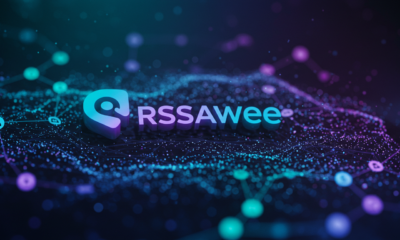
 TECHNOLOGY4 months ago
TECHNOLOGY4 months agoRSSAwee: Unlocking the Future of Digital Connectivity
-

 TECHNOLOGY4 months ago
TECHNOLOGY4 months agoUnveiling iamnobody89757: The Enigma of Digital Identity
-

 TECHNOLOGY4 months ago
TECHNOLOGY4 months agoDGMNews.com: Revolutionizing Digital News in the Modern Era
-

 BLOG2 months ago
BLOG2 months agoUnraveling Iszlágiya: A Deep Dive into Its Essence
-
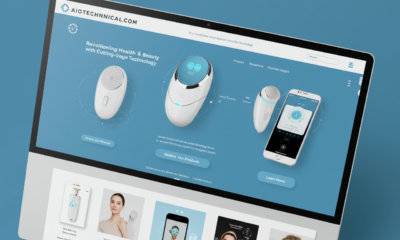
 HEALTH3 months ago
HEALTH3 months agoAIOTechnical.com: Innovating Health & Beauty with Advanced Tech
